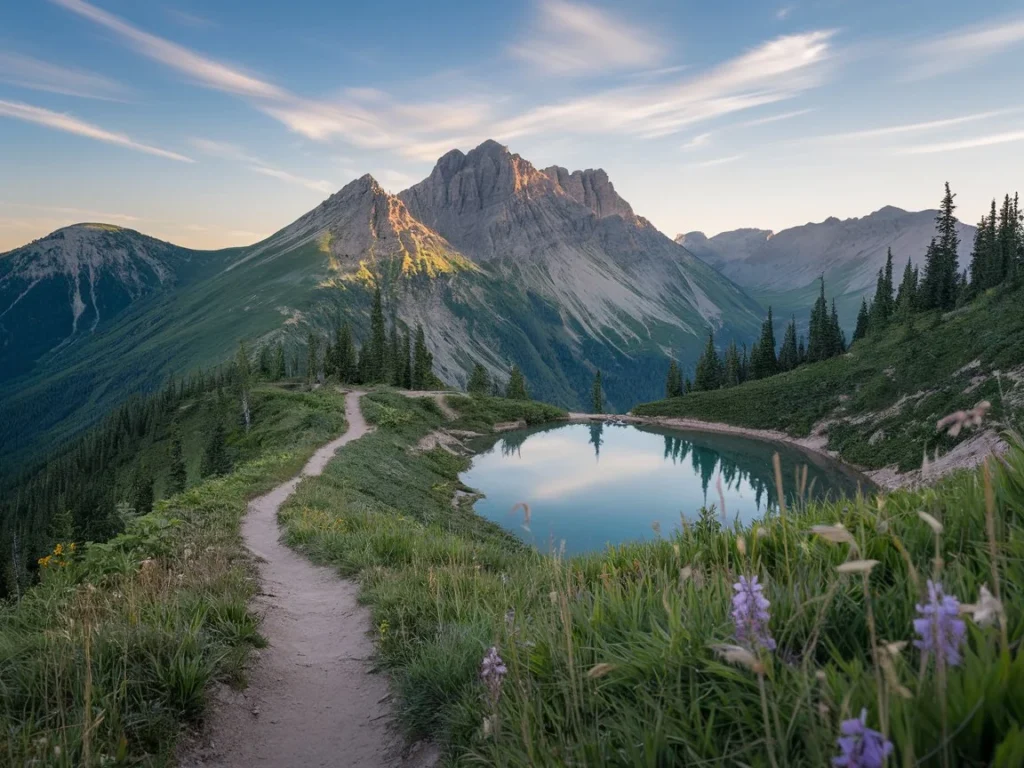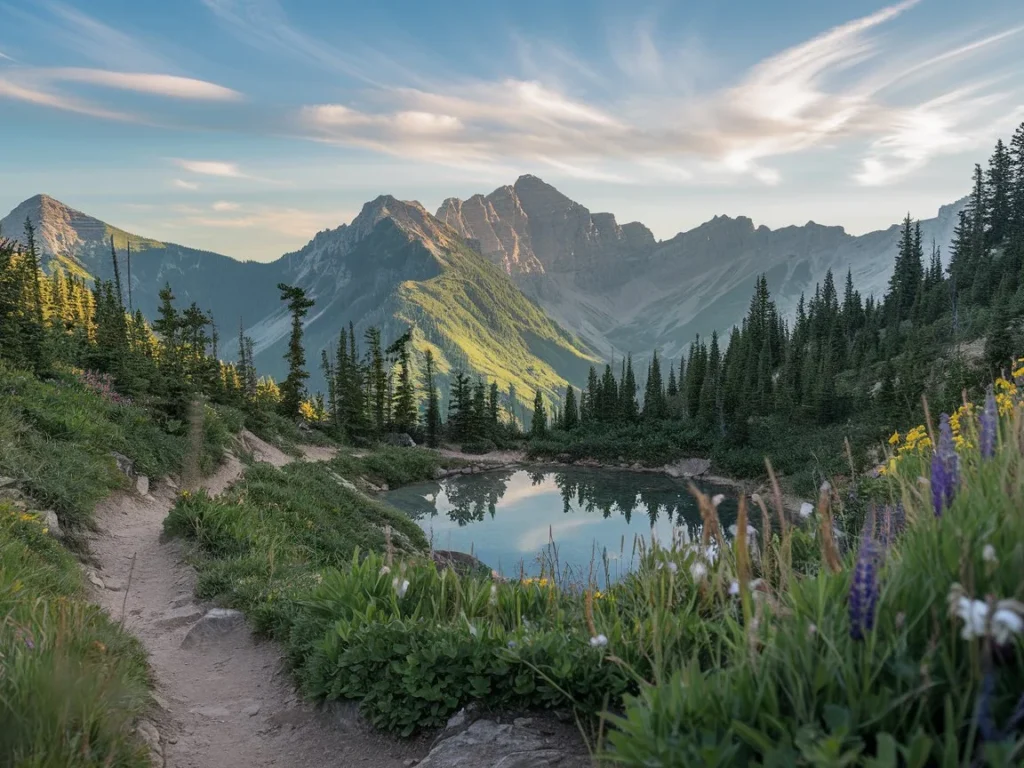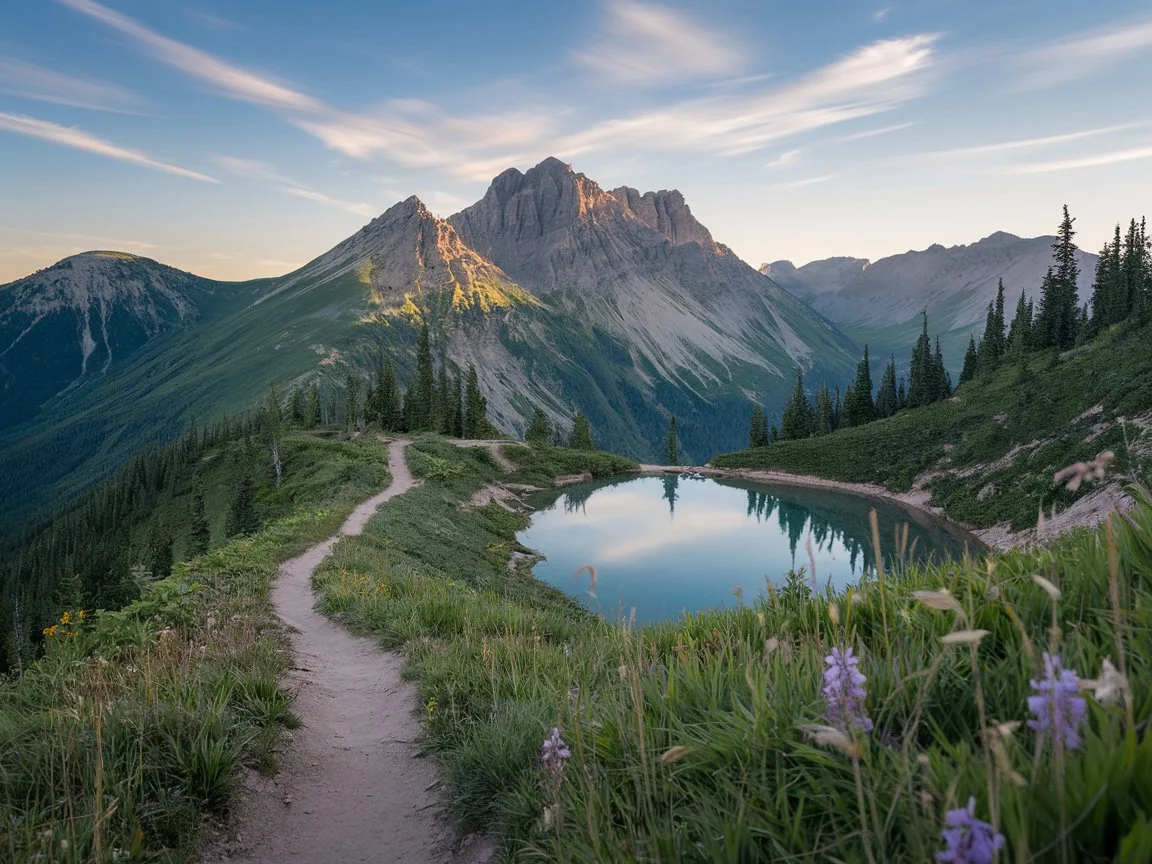
Introduction
Hiking in the mountains is an experience like no other. The crisp air, the breathtaking vistas, and the sense of accomplishment as you reach a summit or overlook make it an unforgettable adventure. Whether you’re a seasoned hiker or a beginner, mountain trails offer something for everyone—from gentle paths through alpine meadows to challenging ascents with panoramic views, discover the best scenic mountain trails to hike.
Beyond the physical challenge, mountain hiking provides numerous mental and emotional benefits. It’s a chance to disconnect from the digital world, reduce stress, and reconnect with nature. The rhythmic pace of hiking, combined with the beauty of the mountains, creates a meditative experience that rejuvenates the mind and body.
This guide will take you through the best scenic mountain trails for every skill level, essential gear for a safe and comfortable hike, seasonal tips, and top destinations. Whether you’re planning a day hike or a multi-day adventure, this guide will help you make the most of your time on the trails.
1. Best Scenic Mountain Trails for Every Skill Level
Mountain trails cater to hikers of all abilities. Here’s a breakdown of trails for beginners, intermediates, and advanced hikers:
- Beginner Trails:
- Description: These trails are perfect for those new to hiking or looking for a relaxed experience. They feature well-marked paths, gentle elevation gains, and stunning views.
- Example: The Bear Lake Loop in Rocky Mountain National Park, Colorado, is a 0.8-mile loop with minimal elevation gain and beautiful views of the surrounding peaks.
- Intermediate Trails:
- Description: Intermediate trails offer moderate climbs and more varied terrain, with rewarding scenic views. They’re ideal for hikers with some experience who want a bit of a challenge.
- Example: The Skyline Trail in Mount Rainier National Park, Washington, is a 5.5-mile loop with wildflower meadows, glacial views, and a moderate elevation gain.
- Advanced Trails:
- Description: Advanced trails are for experienced hikers seeking a challenge. They often feature steep ascents, rugged terrain, and high-altitude conditions.
- Example: The Bright Angel Trail in Grand Canyon National Park, Arizona, is a 9.5-mile out-and-back trail with steep switchbacks and stunning canyon views.
2. Essential Gear for a Safe and Comfortable Hike
Having the right gear is crucial for a successful hike. Here’s what you’ll need:
- Footwear:
- Hiking Boots: Choose boots with ankle support and sturdy soles for rocky or uneven terrain.
- Trail Shoes: Lightweight trail shoes are ideal for well-maintained paths and shorter hikes.
- Clothing & Layers:
- Base Layer: Moisture-wicking fabric to keep you dry.
- Insulating Layer: Fleece or down for warmth.
- Outer Layer: Waterproof and windproof jacket for protection against the elements.
- Backpack Essentials:
- Water: Carry at least 2 liters per person, plus a filtration system for longer hikes.
- Snacks: High-energy foods like nuts, dried fruit, and energy bars.
- Navigation Tools: Map, compass, and GPS device.
- First-Aid Kit: Include bandages, antiseptic, and any personal medications.
3. Seasonal Hiking Tips & Best Times to Go
The best time to hike depends on the season and your preferences:
- Spring & Summer:
- Highlights: Wildflowers, waterfalls, and warm weather.
- Tips: Start early to avoid afternoon thunderstorms and bring sunscreen and bug repellent.
- Fall:
- Highlights: Stunning foliage and cooler temperatures.
- Tips: Layer clothing for changing conditions and check for trail closures due to hunting seasons.
- Winter:
- Highlights: Snow-covered landscapes and fewer crowds.
- Tips: Wear insulated, waterproof boots and use traction devices like microspikes for icy trails.
4. Safety Tips for Mountain Hiking
Safety should always be a priority when hiking in the mountains:
- Navigation & Trail Markers:
- Always carry a map and compass, and know how to use them. Pay attention to trail markers and avoid shortcuts.
- Wildlife Awareness:
- Store food in bear-proof containers and make noise to avoid surprising animals. Keep a safe distance from wildlife.
- Weather Readiness:
- Check the forecast before heading out and be prepared for sudden changes. Carry extra layers and a rain jacket.
5. Top Mountain Destinations for Scenic Hiking
Here are three must-visit mountain destinations for hikers:
- Trail 1: The Highline Trail, Glacier National Park, Montana
- Difficulty Level: Intermediate
- Key Features: This 11.8-mile trail offers stunning views of glaciers, alpine meadows, and rugged peaks.
- Trail 2: Angels Landing, Zion National Park, Utah
- Difficulty Level: Advanced
- Key Features: A 5.4-mile trail with steep drop-offs and breathtaking views of Zion Canyon.
- Trail 3: Franconia Ridge Loop, White Mountains, New Hampshire
- Difficulty Level: Intermediate to Advanced
- Key Features: An 8.9-mile loop with panoramic views of the White Mountains and challenging terrain.
6. How to Plan the Perfect Hiking Adventure
Planning is key to a successful hiking trip:
- Creating a Hiking Itinerary:
- Choose trails that match your fitness level and experience. Plan for rest days and alternate routes.
- Packing Smart:
- Bring only what you need, but don’t skimp on essentials like water, food, and safety gear.
- Combining Activities:
- Pair hiking with camping, photography, or wildlife watching for a well-rounded outdoor experience.

Conclusion
Hiking in the mountains is a rewarding and transformative experience. Whether you’re exploring beginner-friendly trails or tackling challenging ascents, the beauty of the mountains will leave you in awe. By choosing the right gear, following safety tips, and planning carefully, you can make the most of your hiking adventure. So lace up your boots, hit the trails, and discover the magic of mountain hiking. Remember, the mountains are calling—will you answer?
You can explore more in our guide: Top Hiking Trails Near Mountain Cabins Around the World

